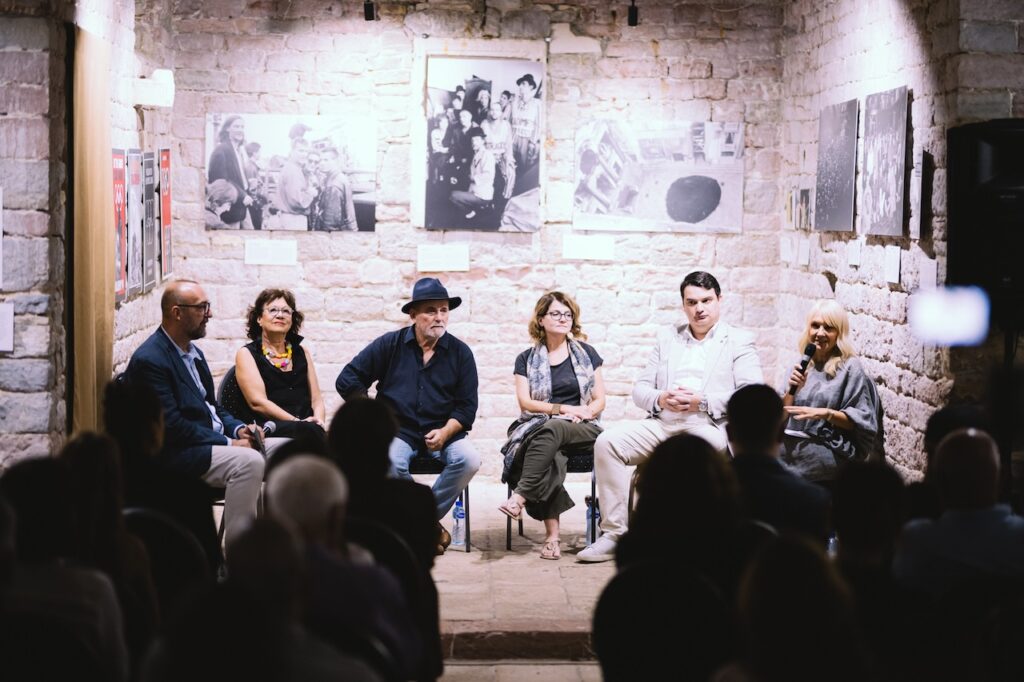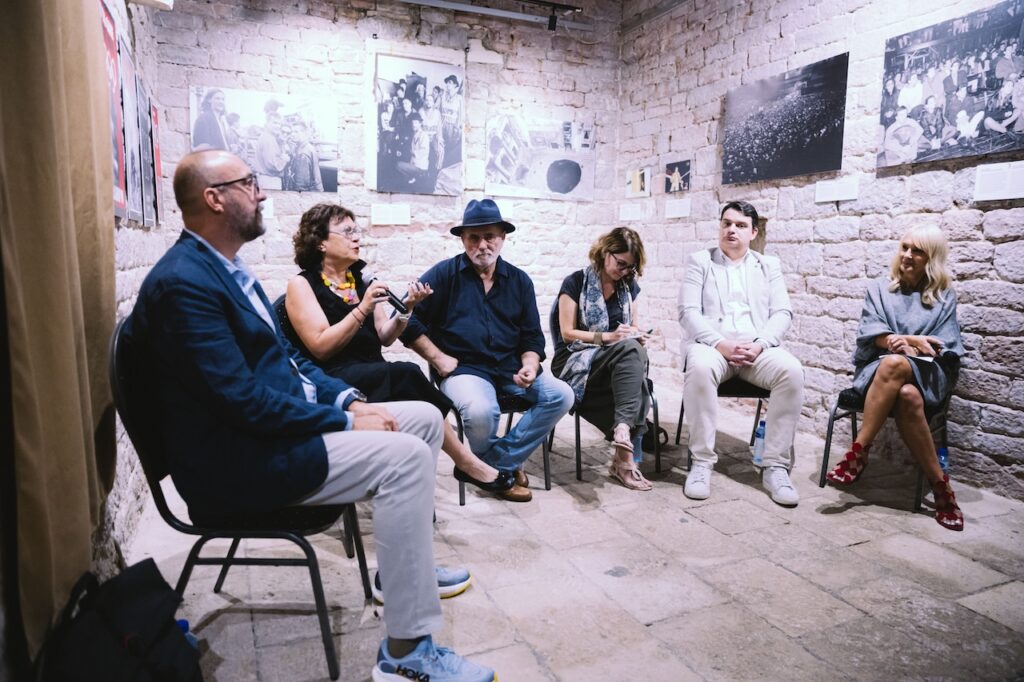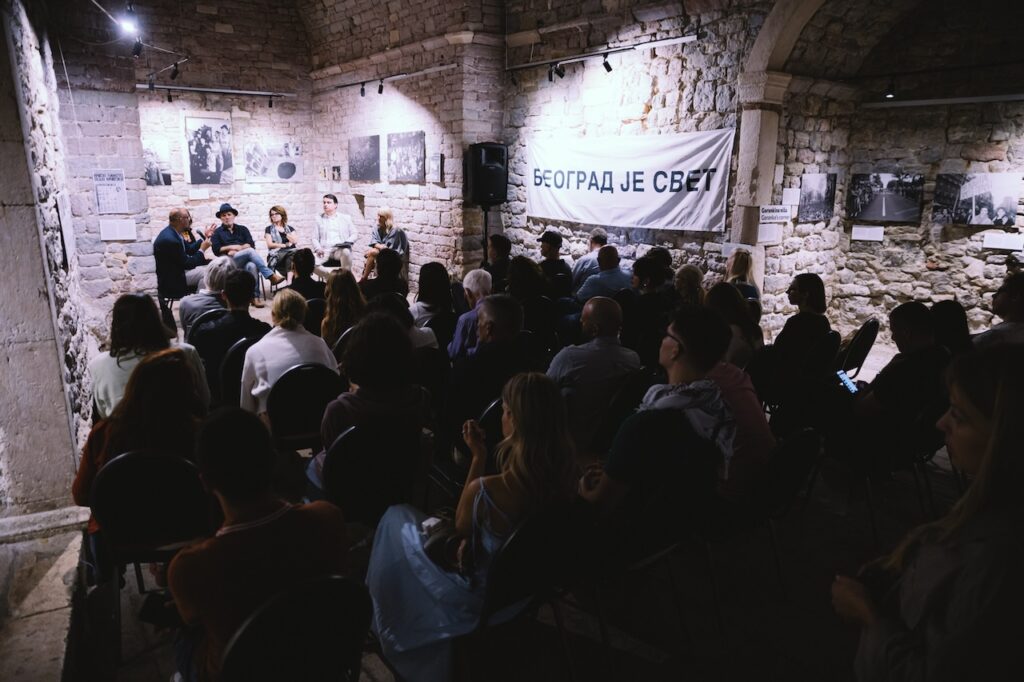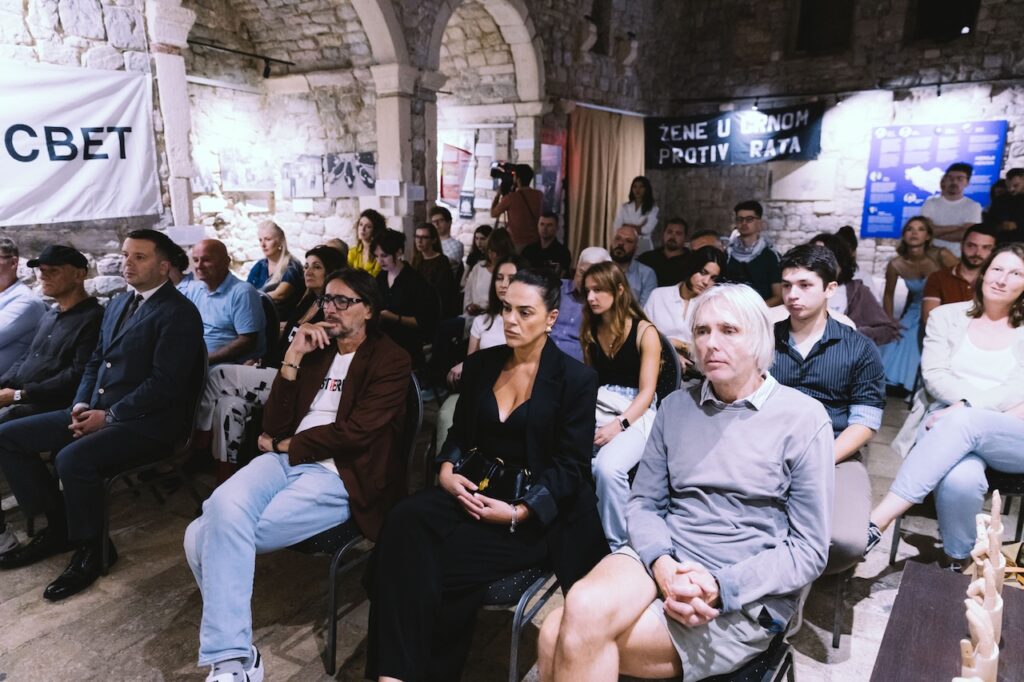“The wars of the 1990s are often portrayed as fate, as something inevitable, which in fact serves to to absolve of responsibility those who made the decisions and those who supported them,” was the message at the panel “The 1990s: From Dissent to Resistance”, organized last night by the Centre for Civic Education (CCE), Cultural Front, and Foundation M90, in the Santa Maria in Punta church in Budva’s Old Town.

“When someone thinks analytically, they are able not only to see reality, but also where it leads,” said Dubravka Stojanović, full professor at the Department of History at the Faculty of Philosophy, University of Belgrade, and one of the initiators of the “Museum of the 1990s” initiative, as she opened the panel. She stressed that part of the history of the 1990s has been completely erasedthrough organized efforts. “Any memory of alternatives, of people who pointed out where things were heading and how it would look today, is inconvenient. Firstly, because many of those in power today are the same as in the 1990s, and secondly, because a large part of society supported it at the time,” she explained. Stojanović also pointed out that history and the wars of the 1990s are often presented as fate, as something that had to happen. “Analyzing history textbooks, I noticed how wars are described – they say ‘the war erupted, spread…’. These are words describing nature, not society, as if war were a natural phenomenon recurring in cycles. And this is a way of relieving responsibility for those who made the decisions and those who supported them,” she argued. “That’s why it is crucial to deal with all those who resisted,” she added. She emphasized that such people showed that there were always those who knew where it was heading, who said what it would look like, that there was no surprise, and that different solutions existed. “The bloody breakup of Yugoslavia was not the only option – and precisely for that reason, these people are being erased from memory today. And we will not allow that,” she noted.

“I was born after that terrible war and the broader events, and I was fortunate to live in a country that, in some ways, avoided the horrors of mass suffering, but which nonetheless played one of the most shameful roles in that war. Here I especially emphasize the shelling and bombing of Dubrovnik and everything that accompanied that crime,” said Petar Odžić, President of the Budva Municipal Assembly. “I believe that some of the brightest points of that era were the newspapers Monitor and Liberal, which raised their voices against the warmongers and against those who, not seeing the consequences, triggered a general catastrophe,” he said. Speaking as a politician, he stressed the importance of remembering those who were on the anti-war side and represented positive figures at that time. “But I also feel obliged to mention the other, darker side, such as the regime-controlled media – Television of Montenegro – Television Titograd and Pobjeda – which made a full contribution to propaganda and incitement of hatred. Their role must not be forgotten, all the more since many of those names are still present in public life today,” Odžić emphasized. “It is not easy to speak of responsibility, but I believe it is necessary if we want to build a society freed from the legacy of the 1990s,” he concluded.

“The Montenegrin context is quite different when we speak about culture, because the 1990s were a period when culture was scarce, given that in the previous period, within the SFRY, the field had been underdeveloped and with limited capacity. However, it would be wrong to say there was no content, as the 1990s launched projects such as the Cetinje Biennale, which represents exceptional value,” said Janko Ljumović, professor at the Faculty of Drama Arts, University of Montenegro. He stressed that the trauma of Yugoslavia’s dissolution and the broader context of that period left a deep legacy that remains alive today. “We all carry it, whether we want to remember it or not. This is also shown by the Museum of the 1990s – how important it is to have both a collective and an institutional memory of the 1990s. It is a collective story, but also an individual one, as many actors of that time are still alive, while sadly, some are no longer with us,” Ljumović explained.
“In my fourth year of studies, I joined Women in Black and found in them strength, closeness, a place of learning and courage,”said civic activist Paula Petričević. “That was the first space where I managed to connect knowledge with practice and activism – because without the decision to step into the public sphere and not leave it to louder authorities, wars become inevitable,”Petričević explained, adding that for her the organization was a way to overcome the feeling of loneliness and isolation, and to regain trust in her own eyes and common sense. “Through that network of people, I learned that the war was not inevitable and that it is crucial to oppose violence and nationalist rhetoric,” she said, expressing her gratitude to the women and men she met and worked with through that network. “Today, unfortunately, we are reliving the 1990s, because we never truly confronted them,” Petričević concluded.

“Monitor was born out of a double refusal – ours as journalists and as human beings, and the refusal of a specific readership,”said Esad Kočan, one of the founders and long-time editor-in-chief of the weekly Monitor. “Technically, creating Monitor was easy. At that time, truths about the authorities were not hidden, but it was believed no one would have the courage to say them publicly and bear witness. We decided to dare – not only out of professional duty, but also out of self-respect – to speak and to resist that terror of obviousness,” he explained. Kočan recalled the energy and readers who wanted to see that obviousness, who needed Monitor in order to dare to believe their own eyes, to believe themselves, and not to stumble and remain alone. “Readers were our therapy, and we were theirs. That was our strength and the reason Monitor survived,” Kočan concluded.
The panel was part of the project “Museum of the 1990s – Regional Centre for Reconciliation, Education and Future Cooperation”, implemented by Cultural Front, Foundation M90, and CCE, with the support of the Ministry of Foreign Affairs of the Kingdom of the Netherlands through the MATRA programme, and the Shared Horizons project funded by the Republic of France and implemented by Expertise France Groupe AFD. The content of the panel is the sole responsibility of the project implementers and does not necessarily reflect the views of the donors.
Enes Pućurica, Programme Associate
